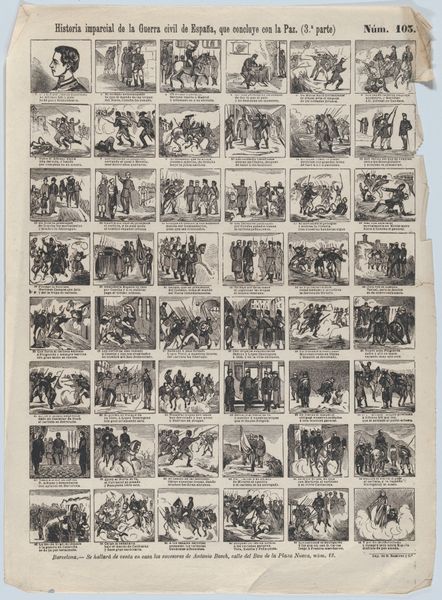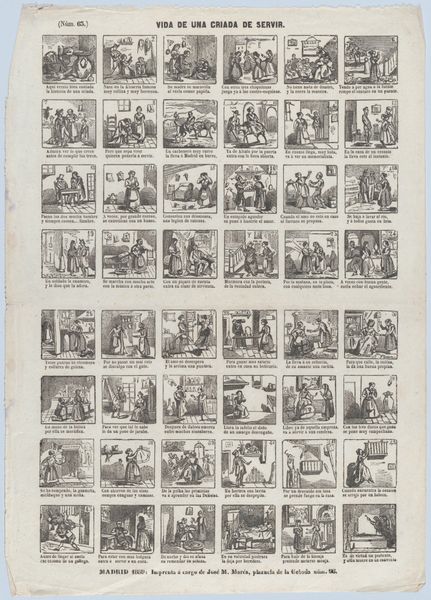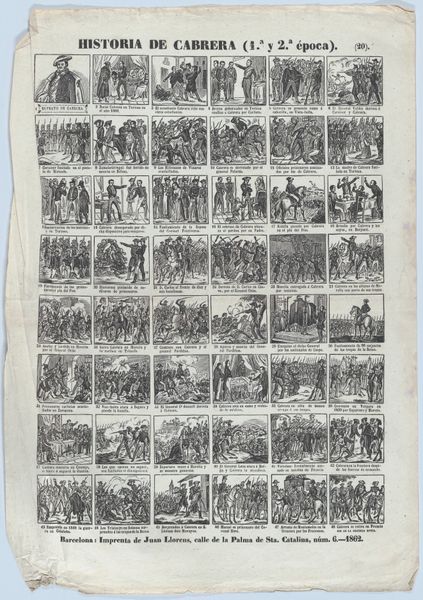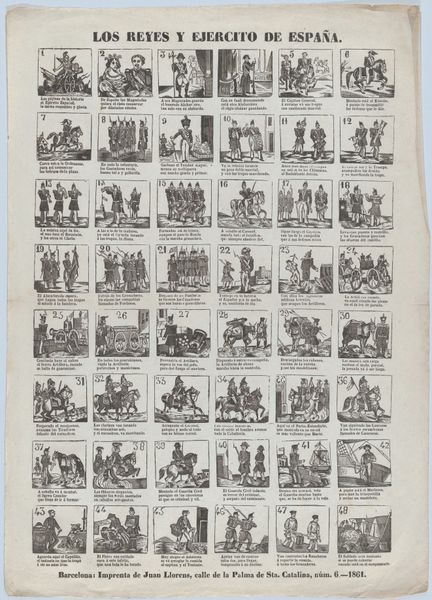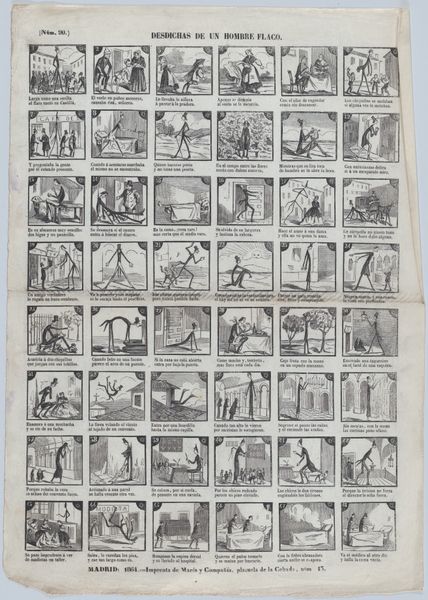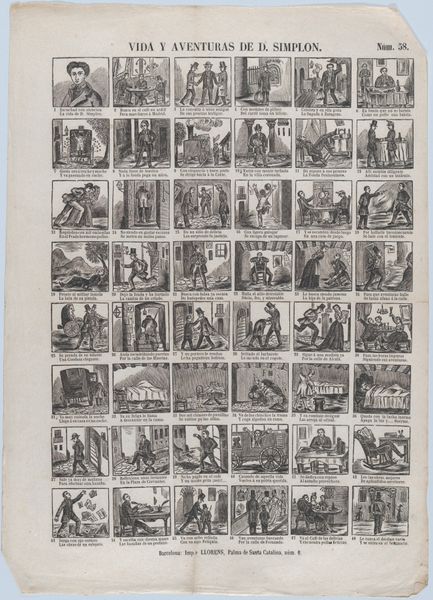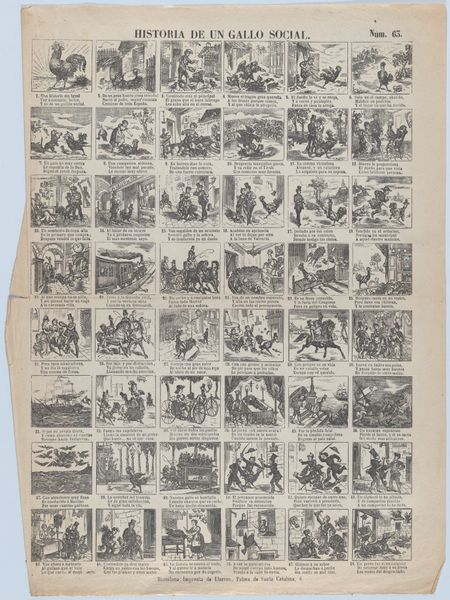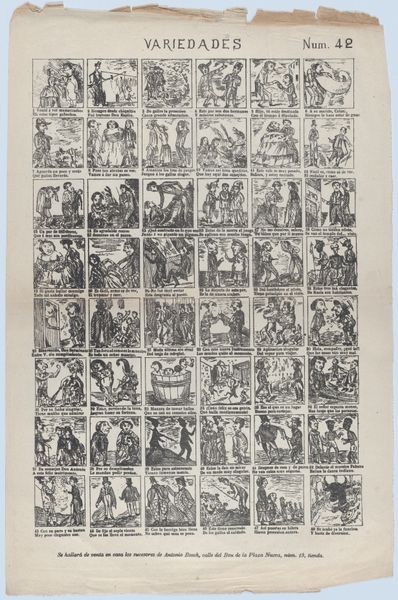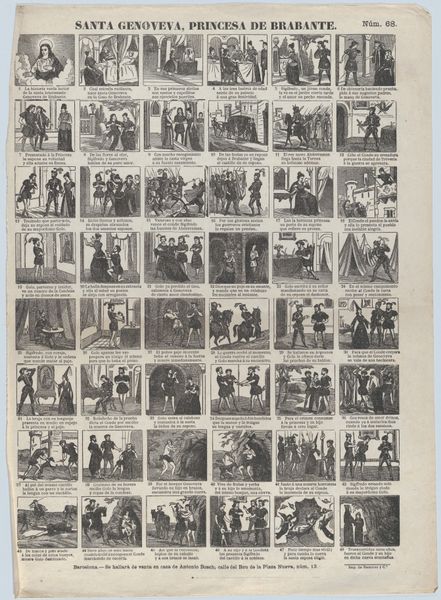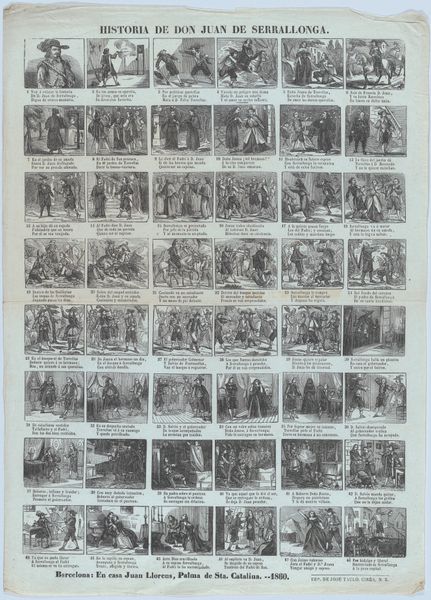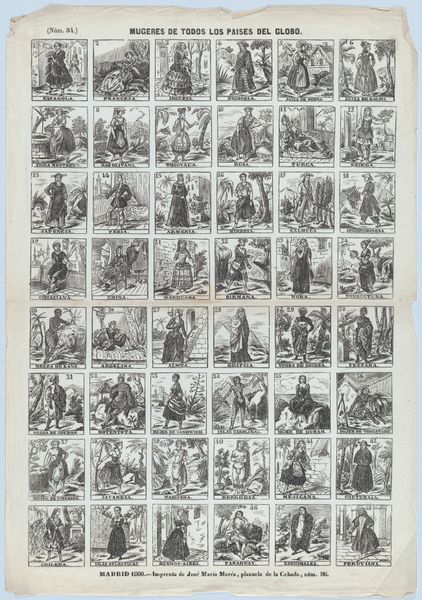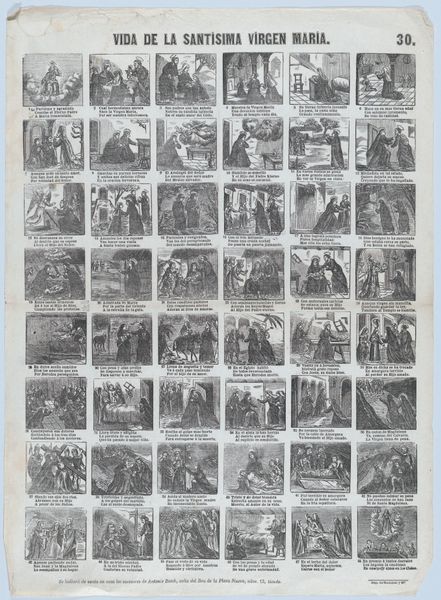
Broadside with 48 scenes illustrating passages of holy scripture (Part II) 1855 - 1875
0:00
0:00
drawing, graphic-art, print, engraving
#
drawing
#
graphic-art
#
narrative-art
# print
#
history-painting
#
engraving
Dimensions: Sheet: 17 5/16 × 12 3/16 in. (44 × 31 cm)
Copyright: Public Domain
Editor: This is José María Marés' "Broadside with 48 scenes illustrating passages of holy scripture (Part II)," created sometime between 1855 and 1875. It's a print, an engraving filled with many small narrative scenes. It feels very dense with information; how do you interpret this work through a formal lens? Curator: Initially, note how the artist divides the picture plane into a grid, containing individual narrative vignettes. This gridded structure offers a sense of order. How does the stark contrast of light and shadow affect your reading? Editor: It makes each scene feel very dramatic, almost like little stages lit for maximum emotional impact. Does that high contrast contribute to the work's legibility? Curator: Precisely. The engraving technique uses linear strokes to define forms, creating tonal variations. The strategic deployment of dark lines against a light background elucidates the subjects within each frame and articulates a spatial hierarchy. Notice also the compositional arrangement within each miniature scene; consider the placement of figures and objects in relation to one another, noting any recurring patterns or motifs. Editor: The figures are often centrally placed, almost posed, and the scenes, though varied, do repeat certain visual elements like drapery or architecture. How would a Formalist read the overall pattern in the series of images, do you think? Curator: It directs attention sequentially; the broadside's power is not necessarily in any individual scene but in the relationship between all of them and how one reads them as an array. Ultimately, our engagement with this artwork stems from understanding its fundamental formal construction. Editor: I see now how analyzing the form reveals much about how we’re meant to understand the whole narrative! Curator: Yes, a close reading of formal elements facilitates an informed interpretation, highlighting inherent organizational principles.
Comments
No comments
Be the first to comment and join the conversation on the ultimate creative platform.
